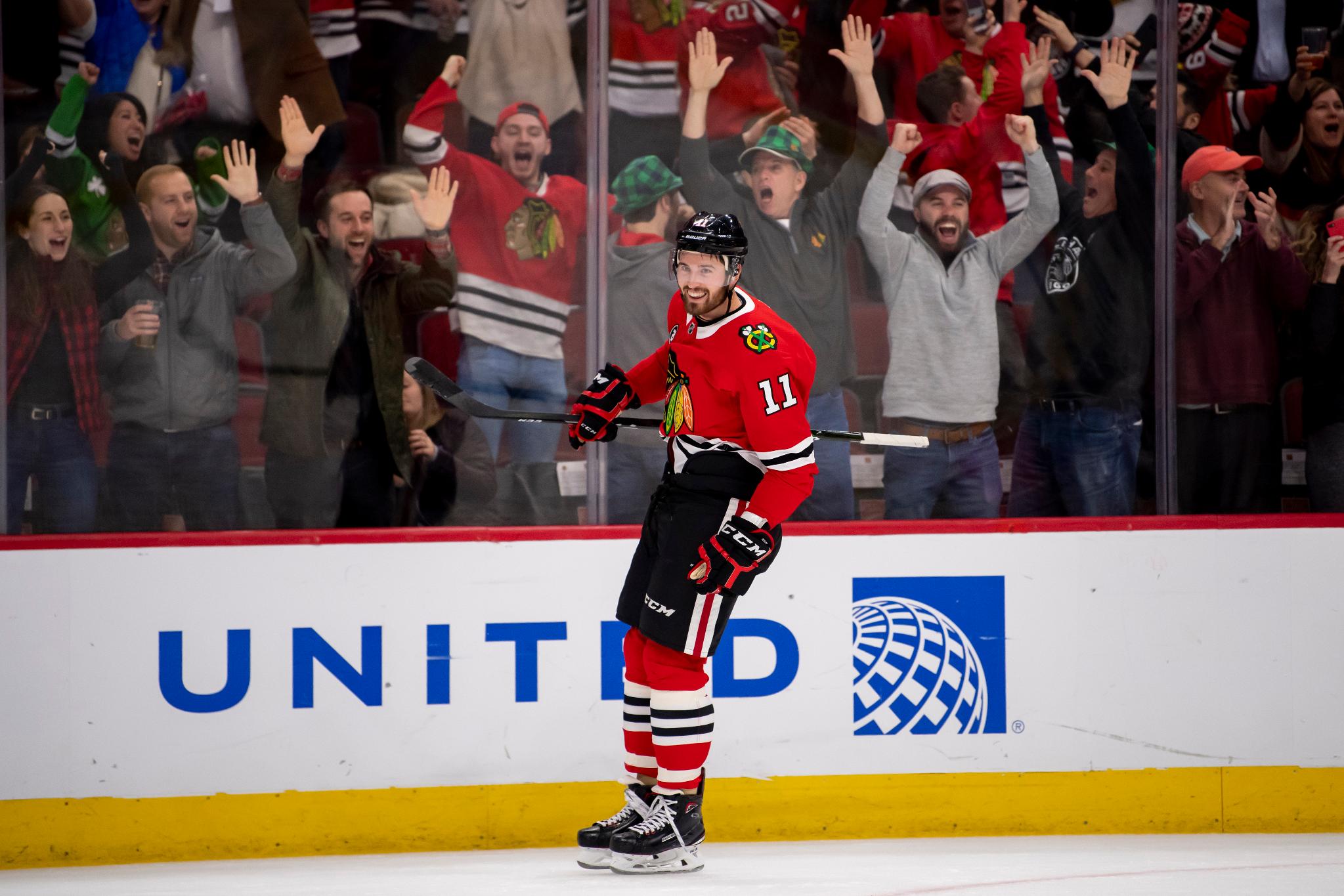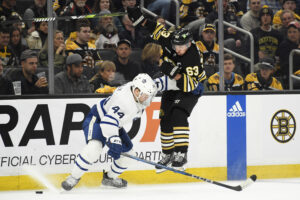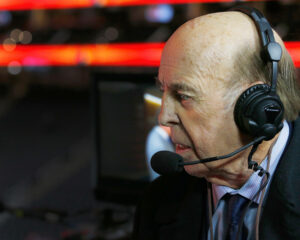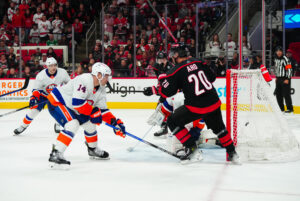Player development seems to always result in more questions than answers. How likely is it for a top pick to pan out? What makes a player a “steal”? Last Word On Hockey will be starting a new series on how to properly develop prospects from all different spots throughout the draft. This week’s piece involves top-15 picks and how they were used early in their careers.
Player Developments Of Top-15 Picks
In the span of 2005 through 2015, there were 21 total selections made between 11th overall and 15th overall on forwards playing in North America. Looking at all 21 forwards, they were split into different categories. Today, we’ll look at the category of “Rushed”. That category had six players, with two making their NHL marks in their DY+3 or later seasons. Those two players were Brendan Perlini and Radek Faksa.
Player Development Of Brendan Perlini
Perlini, who was drafted 12th overall in the 2014 NHL entry draft by the Arizona Coyotes, came out of the Niagara Ice Dogs organization of the OHL. In his DY-1 season, he started with the Barrie Colts, before being dealt to Niagara. In total, he combined for 12 points in 59 games between the two teams, for 0.203 points per game. That rate ranked last out of the 21 forwards mentioned above in DY-1 production. He followed that up with 34 goals and 37 assists for 71 points in 58 games in his DY, for 1.224 points per game. That ranked seventh out of those same 21 forwards in DY production.
Brendan Perlini of the @NHLBlackhawks became the first player to score a hat trick in his first regular-season game against his former team since Joe Corvo on March 16, 2008. #NHLStats pic.twitter.com/aSYryAhFc6
— NHL Public Relations (@PR_NHL) March 12, 2019
Perlini would stay with the Ice Dogs for two more seasons. In his DY+1 season, he scored 26 goals and 34 assists for 60 points in 43 games. That was a rate of 1.395 points per game, ranking sixth out of 20 forwards still outside the NHL in DY+1 production. In his DY+2 season, his last with the OHL, he scored 25 goals and 20 assists for 45 points in 57 games, a big step down. He recorded a 0.789 points per game, ranking ninth out of 12 forwards still outside the NHL in DY+2 production. Despite the disappointing season, he would get his NHL shot.
How Was Perlini Used?
In his first season playing professionally, he would split between the AHL and NHL. At the AHL level, he recorded 14 goals and 19 points in 17 games. At the NHL level, Perlini would score 14 goals and 21 points in 57 games, while averaging 14:50 time on ice per game. Analytically, Perlini would be alright. His even-strength offence goals above replacement (EVO) was decent at 1.6, while his even-strength defence goals above replacement (EVD) was not, down at -0.5. His modest even-strength performance led to his wins above replacement (WAR) score to be 0.1 and his goals above replacement (GAR) score to be 0.4.
In his second professional season, Perlini would play only in the NHL. There, he averaged 14:31 per game, scoring 17 goals and 13 assists for 30 points in 74 games. Analytically, he would improve across the board, except for EVD. His EVO was an improved 4.3, while his EVD dropped to -0.7. His improvement offensively, however, helped improve his WAR (1.2) and GAR (6.1).
Perlini Takes Step Back, Coyotes Trade Him To Blackhawks
Despite his solid NHL performance in year two, Perlini would regress in year three. After just six points in 22 games with Arizona, he was dealt to the Chicago Blackhawks. There, Perlini would score 12 goals and 15 points in 46 games. Chicago did help him, despite his ice time dropping from 13:41 in Arizona to 10:36 with Chicago. However, his analytics were unbelievably poor, going below average across all four stats looked at. His EVO (-2.8) and EVD (-3.2) were incredibly bad, leading to his WAR (-1.1) and GAR (-6) to be one of the worst stat lines looked at in this project.
Following his first three seasons, Perlini would play just one more game with the Blackhawks, in 2019-20, before he was traded again. This time, he wound up with the Detroit Red Wings, where he would finish the season playing 39 games with four points. In 2020-21, Perlini would leave North America to play with HC Ambri-Piotta of the National League (Switzerland), scoring 16 points in 21 games there. After that one season overseas, he would return to the NHL with the Edmonton Oilers for 23 games, scoring five points. He also saw games with their AHL affiliates, the Bakersfield Condors, for 18 games, scoring 11 goals and 18 points. Currently, he is a free agent, as of July 13th, 2022. All things considered, his player development did stagnate at the NHL level. However, there may be more to this story than just the team’s deployment. But that’s for another day.
Player Development Of Radek Faksa
Faksa, who was drafted 13th overall in the 2012 NHL draft by the Dallas Stars, came out of the Kitchener Rangers organization of the OHL. Before joining the Rangers in his DY, he would play with HC Ocelari Trinec U20 in Czechia’s U20 league. There, he scored 15 points in 24 games, which is a rate of 0.625 points per game. That ranked 10th out of 21 forwards in DY-1 production. In his first North American season with the Rangers, Faksa would score 29 goals and 37 assists for 66 points in 62 games, a rate of 1.065 points per game. That ranked 11th out of 21 players in DY production.
Faksa would play two more OHL seasons and one AHL season following his DY. In his DY+1, he would score nine goals and 22 assists for 31 points in 39 games, a rate of 0.795 points per game. That ranked 19th out of 20 forwards outside the NHL in DY+1 production. Faksa would split the season between the Rangers and a new team, the Sudbury Wolves, where he was traded. Overall, he scored 48 points in 59 games, a rate of 0.814 points per game. That ranked eighth out of 12 forwards outside the NHL in DY+2 production. Making the move to the AHL, Faksa would score four goals and 10 points in 32 games, a rate of 0.313 points per game. That ranked sixth out of seven forwards still outside the NHL in DY+3 production. He would finally get an NHL shot following that AHL season.
How Was Faksa Used?
In his first professional season, Faksa would split between the AHL and NHL. In the AHL, he would score 15 goals and 11 assists for 26 points in 28 games. At the NHL level, he would score five goals and 12 points in 45 games, while averaging 12:21 per game. Analytically, he had a solid season. His EVO (3.4) and EVD (1.2) painted a better picture than his raw stats suggest. The same could be said about his WAR (0.9) and GAR (4.7), which shows more potential than he showed since getting drafted.
In his second season, he played only at the NHL level. In 80 games, he averaged a very solid 16:10 per game. With that larger role, he would score 12 goals and 21 assists for 33 points. Perlini’s analytics, overall, regressed slightly, however. His EVO (4.3) improved slightly, mostly due to the larger role, but his EVD (-1.6) regressed due to tougher matchups. His WAR (0.5) and GAR (2.6) reflected the fact that he struggled in tougher matchups despite a better offensive season.
Faksa Settles In, Dallas Stays Patient In Player Development
In his third season, Faksa would play 79 games, averaging 15:16 per game, a regression in role. Despite that, he kept up his production with 17 goals and 16 assists for 33 points. Analytically, Faksa would have an excellent season. His EVO (8.4) was excellent, and his EVD (2.1) showed that same potential from his rookie season. That led to his WAR (1.9) and GAR (9.9) to greatly improve.
There have been four seasons since his third year in the league, and he still remains with the Stars. In those four seasons, he has recorded 37 goals and 46 assists for 83 points in 279 games. His ice time in those seasons was an average of 16:19 per game. Though his offence hasn’t met the level of a top-15 selection, the Stars were patient in their player development and it led to Faksa being a strong defensive zone presence.
Junior league stats via Elite Prospects, NHL stats via Hockey Reference, NHL analytics via Evolving Hockey






